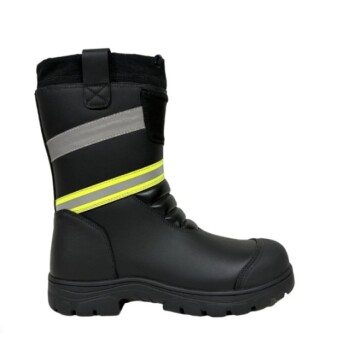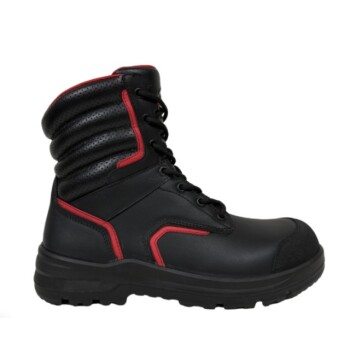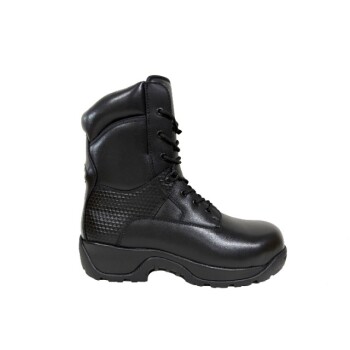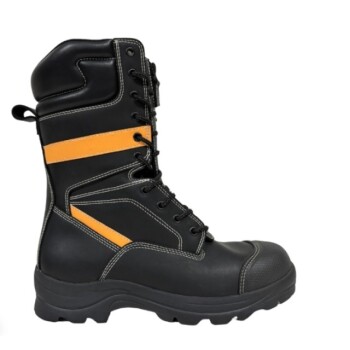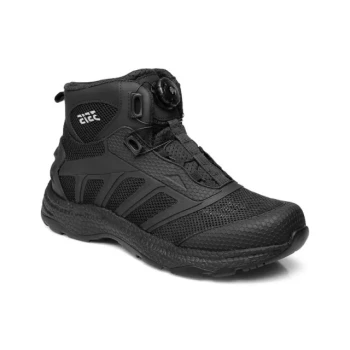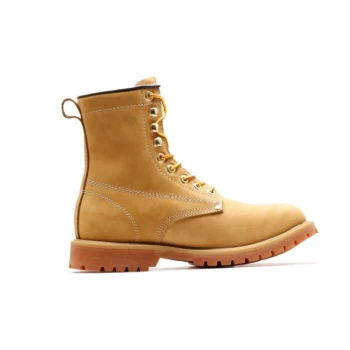At their core, the difference between running shoes and trekking shoes is their intended environment. Running shoes are engineered for forward propulsion and cushioning on predictable, hard surfaces like pavement, while trekking shoes are built for stability, grip, and protection on rugged, uneven terrain.
The fundamental distinction lies in their primary function: running shoes are optimized for repetitive impact and forward motion, whereas trekking shoes are designed to provide a stable, protective platform against the unpredictable challenges of a trail.

The Core Design Philosophy: Propulsion vs. Protection
The construction of each shoe type stems from a completely different goal. Understanding this philosophy is key to choosing the right footwear and avoiding discomfort or injury.
Running Shoes: Engineered for Speed and Cushioning
Running shoes are designed for one primary purpose: to support the foot during the repetitive, high-impact motion of running.
Their entire construction is focused on reducing the stress of each foot strike and facilitating an efficient, forward-moving gait. They are lightweight and flexible to avoid hindering your natural stride.
Trekking Shoes: Built for Stability and Grip
Trekking shoes (or hiking shoes) are designed to be a protective shell for your foot on unpredictable terrain.
Their goal is to create a stable base on uneven ground, protect you from rocks and roots, and provide reliable traction on surfaces ranging from dirt and mud to wet rock. They prioritize durability and support over lightweight flexibility.
Key Differences in Construction
These opposing design philosophies result in tangible differences in how each part of the shoe is built.
The Outsole (Traction and Grip)
A running shoe's outsole is typically made of durable rubber with a relatively flat tread pattern. This design maximizes surface contact for reliable grip on pavement or a treadmill.
A trekking shoe features an outsole with deep, aggressive lugs. These thick, widely-spaced patterns are designed to bite into soft earth, mud, and gravel, providing superior traction on slippery or loose surfaces.
The Midsole (Cushioning vs. Stiffness)
The midsole of a running shoe is its engine, containing advanced foam compounds designed for shock absorption and energy return. It is soft and flexible to cushion the impact of thousands of steps.
In contrast, a trekking shoe has a much stiffer and denser midsole. This stiffness, often enhanced by a plate called a shank, prevents sharp rocks from bruising the bottom of your foot and creates a rigid platform for stability on uneven ground.
The Upper (Breathability vs. Durability)
Running shoe uppers are almost always made from lightweight, engineered mesh. The priority is maximizing airflow and breathability to keep your feet cool and dry from sweat.
Trekking shoe uppers are constructed from more robust materials like leather, suede, or durable synthetic fabrics. They are built to withstand abrasion from rocks and branches and often include a waterproof membrane to keep your feet dry from external elements.
Understanding the Trade-offs
Using the wrong shoe for the activity isn't just inefficient; it can be dangerous.
Using Running Shoes for Trekking
This is a common mistake that can lead to problems. The lack of aggressive tread makes you prone to slipping, the soft sole offers little protection from sharp objects, and the minimal support increases the risk of a rolled ankle on uneven ground.
Using Trekking Shoes for Running
While less dangerous, running in trekking shoes is highly inefficient and uncomfortable. Their weight and stiffness will quickly cause fatigue, hinder your natural running form, and can lead to blisters or other strain-related issues due to their lack of flexibility.
Making the Right Choice for Your Activity
Your choice should be dictated entirely by the surface you'll be on most often.
- If your primary focus is running on roads, sidewalks, or a treadmill: A running shoe is the only correct choice for its specialized cushioning and lightweight design.
- If your primary focus is hiking on trails with rocks, roots, and elevation changes: A trekking shoe is essential for the grip, stability, and underfoot protection it provides.
- If your primary focus is running on dirt trails: Look for a specialized "trail running" shoe, which acts as a hybrid by combining the lightweight cushioning of a running shoe with the aggressive grip of a trekking shoe.
Ultimately, matching your footwear to your environment is the most critical step in ensuring comfort, performance, and safety.
Summary Table:
| Feature | Running Shoes | Trekking Shoes |
|---|---|---|
| Primary Use | Pavement, Treadmill | Rugged, Uneven Trails |
| Design Goal | Speed & Cushioning | Stability & Protection |
| Outsole | Flat Tread (Road Grip) | Deep, Aggressive Lugs (Trail Grip) |
| Midsole | Soft, Flexible (Shock Absorption) | Stiff, Dense (Rock Protection) |
| Upper | Lightweight Mesh (Breathability) | Durable Leather/Synthetic (Protection) |
Need the right footwear for your customers?
As a large-scale manufacturer, 3515 produces a comprehensive range of footwear for distributors, brand owners, and bulk clients. Our production capabilities encompass all types of shoes and boots, from high-performance running shoes to durable trekking footwear.
We can help you source the perfect shoes to meet your market's specific demands for comfort, performance, and safety.
Contact 3515 today to discuss your manufacturing needs and elevate your product line!
Visual Guide
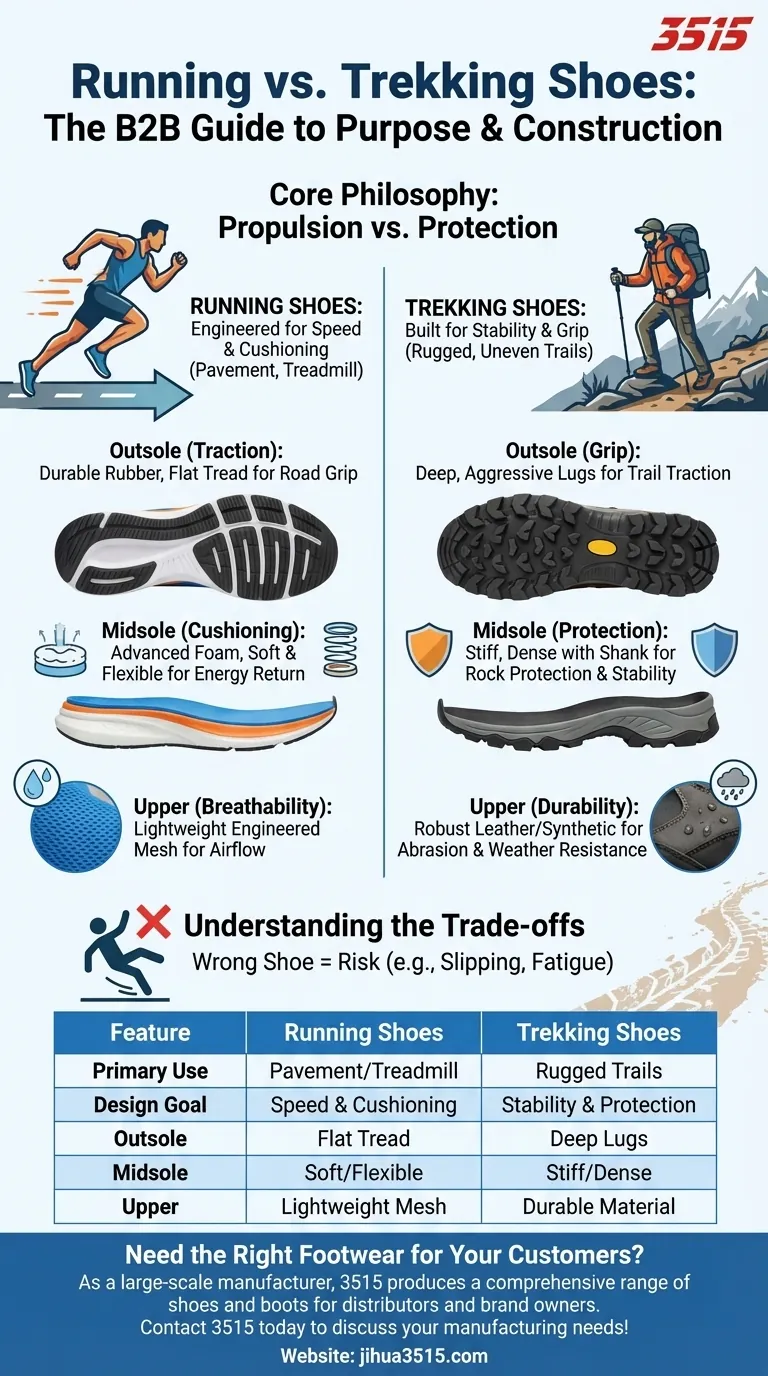
Related Products
- Safety Footwear Wholesale Manufacturer for Custom OEM/ODM Production
- Factory-Direct Wholesale Canvas Boots with High-Traction Rubber Soles
- Wholesale Safety Footwear Manufacturer for Bulk & Custom OEM Orders
- Factory Direct Wholesale Rain Boots Durable Waterproof & Fully Customizable
- Wholesale Anti-Smash & Puncture-Proof Safety Shoes Custom Manufacturing for Brands
People Also Ask
- What are OSHA approved shoes? Understanding the Correct Standards for Workplace Safety
- What are the differences between steel toe, composite toe, and alloy toe Wellington boots? Choose the Right Safety Toe for Your Job
- What cultural and environmental considerations are tied to wearing shoes indoors? Balance Hygiene, Tradition, and Foot Health
- Is safety-toe as good as steel toe? Choose the Right Protection for Your Job
- How long can you wear safety boots? The Lifespan is Determined by Wear, Not Time





